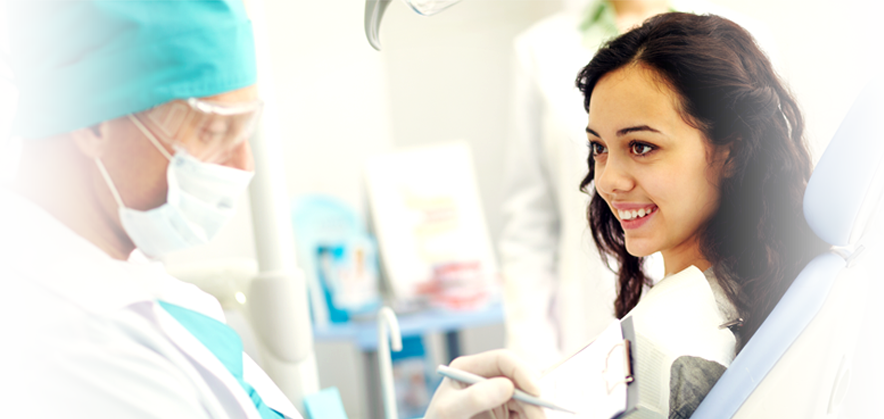Best Toothbrush for Braces

Got braces? Congratulations on taking the exciting first step towards a straighter, more confident smile! Now comes the fun part: keeping those brackets and wires clean throughout your orthodontic journey. Here are some tips for you to navigate the world of toothbrushes for braces.
Picking the Best Toothbrush for Braces
When you or your child wear braces, you know how much extra care you take to ensure your braces don’t gunk up – and your teeth remain clean. Part of going above and beyond involves finding the best toothbrush for braces to make oral upkeep easier. We’re here to help you as you consider brushes in your quest to find the perfect one.
Toothbrushes Designed to Dislodge
Whether your braces are metal or clear plastic, brackets and wires can trap food particles much more easily. This increases your risk of bacteria buildup, leading to tooth decay and gum disease. And you don’t want to deal with cavities or gingivitis while wearing braces – or after they’re off when you’re ready to dazzle.
So, your toothbrush should be able to dislodge the debris in your braces. With that in mind, look for the following toothbrush features.

Small Brushing Head
Since you don’t have a smooth surface to brush, choose a toothbrush that’ll get into those hard-to-reach spots hidden by braces. A small toothbrush head gives you easier access to those spots. And a smaller head can better clean the margins of your gumline where bacteria can build up.
Soft, Rounded Bristles
As you know, braces can create discomfort, especially a few days after you first get them and after adjustments. So, limiting any irritation is just as important as proper brushing when deciding on a toothbrush. And the best toothbrushes have certain things in common:
- Soft, Nylon Bristles: Hard-bristled brushes can wear down enamel and aggravate gums that might already be sore from a recent orthodontics adjustment. Soft-bristled brushes can clean just as effectively without doing this harm.
- Round-Ended Bristles: Bristles with a rounded end can better protect oral tissue – which includes all parts of your mouth – from damage.
- Bristle Variety: The bristles should also be of varying lengths and widths (slim, etc.) to get at all areas where food and plaque might hide.
Easy-to-Grip Handle
The right-sized handle can help you grasp the brush better for more control. If you’re choosing a brush for your child, the handle should be somewhat larger to afford them more control over each brushing stroke. Some brushes come with a silicone handle for extra gripping power.
Manual vs. Powered vs. Sonic
A study published by the International Journal of Clinical Pediatric Dentistry (IJCPD) found that “any of the three brushes can be recommended for orthodontic patients to maintain their oral hygiene during fixed orthodontic treatment.” That’s good news, but the caveat is that this is only true if all three toothbrushes – sonic, powered, and manual – are used correctly.
Here are some other things to know about the three toothbrushes:
- Both sonic and powered toothbrushes run on electricity via a rechargeable battery. Or else they use non-rechargeable batteries.
- In the IJCPD study, sonic (and ultrasonic) brushes have the edge over manual and oscillating, rotating powered brushes. Vibrating at a high frequency, the sonic waves generated better remove plaque and dislodge bacteria.
- Manual orthodontic toothbrushes, the least costly of the three, work fine if you brush properly and take care to dislodge the debris caught in your braces. Some of the best manual toothbrushes for braces indicate they’re made for orthodontic brushing.
If your budget allows for a sonic and powered toothbrush, look for these features to help you better monitor your brushing:
- Sensors to alert you if you’re brushing too aggressively
- Alerts every 30 seconds to let you know when to brush a new quadrant of your teeth
- A stop-mode to tell you when two minutes are up
- Modes for adapting to what you want to accomplish, such as cleaning your tongue, etc.
- An alert when you need to change the brush head
- Bluetooth to connect to a monitoring app
Other Toothbrush Tips
For Younger Kids, Always Supervise: As kids 8 or younger get used to their braces, make sure they’re brushing properly. Perhaps you can brush your teeth the same time they do, keeping an eye on their brushing technique. This might even be a good idea for older kids.
Keep a Travel Toothbrush with You at All Times: You’re most likely eating some meals and snacks at work, school, or on the road. Be sure to get extra toothbrushes (and toothpaste) to clean your braced teeth after eating – no matter where you are.
Change Your Toothbrush or Brush Head Every Three Months: This guarantees you’ll always have an effective brush.
Of course, cleaning between teeth daily is also important – whether using floss, a dental water jet, or another type of interdental cleaner. And with a great toothbrush for braces and proper brushing, you or your child should show off a brilliant smile post-braces.
Unlock the secrets to a successful braces journey! Wearing braces requires extra care in dental hygiene, but following these simple steps, combined with regular visits to the dentist, will help you keep your mouth always healthy. Schedule a ortho consultation today with Dr. Matza and his fabulous team at 561.368.3480. Check our IG @matzaorthodontics to learn more about our expertise and what we do!
Reference: [ https://www.colgate.com/en-us/oral-health/early-orthodontics/picking-the-best-toothbrush-for-braces ]
